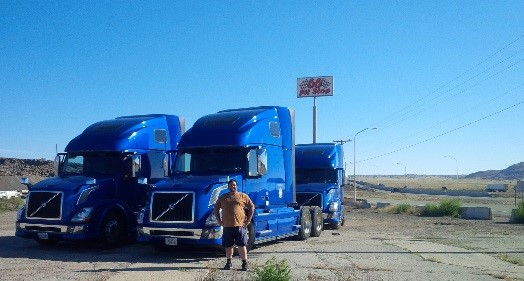It’s 6:00 a.m. on July 11, 2017. Transport Canada’s Dominique-Pierre Dion has been on the road for a week. He is responsible for bringing a convoy of test vehicles equipped with automation technologies developed by the University of California in Berkeley. Once the trucks arrive at Transport Canada’s testing facility in Blainville, Quebec, Dominique-Pierre will work closely with his TC colleagues and partners from Berkeley, to test and evaluate cooperative truck platooning systems.
Truck platooning uses wireless communication and automation to create a convoy or “platoon” of two or more trucks, which follow closely behind one another on the road. Each truck in the platoon uses information from its own in-vehicle sensors and data it receives via wireless link from the first truck in the line. This information helps each truck measure and adjust its position in line based on the speed of the truck in front of it. Every truck in the platoon is operated by a professional driver who controls steering and can take over accelerating and braking at any time, if required.
Why is Transport Canada testing truck platooning? Because these technologies could reduce fuel consumption and improve road safety. Studies show that reducing the spacing between moving vehicles in a convoy reduces the aerodynamic drag they experience. This translates to reduced environmental impacts since each vehicle uses less fuel and releases less carbon dioxide into the atmosphere.
Long-haul trucks accumulate high annual mileage, mostly at highway speed, so cooperative truck platooning systems could save truckers lots of money. Transport Canada’s tests and demonstrations of this technology—which have included track testing and wind tunnel testing—showed a range of fuel savings between 4.5 and 18 per cent, depending on the platoon formation.
The United States, countries in Europe and Asia have also been studying truck platooning. Dominique-Pierre, who has been with Transport Canada for the past 10 years, is proud to serve as the lead project manager for testing this new technology. In addition to training drivers to operate their trucks at speeds of 105 kilometres per hour with following distances as close as four metres, Dominique-Pierre participated in some of the tests himself to evaluate the impact of other traffic cutting in between the trucks in the moving platoon.
Thanks to Dominique-Pierre and his team, Transport Canada is continuing its long-standing collaboration in this field of study with the National Research Council Canada, Environment and Climate Change Canada, and has established new international partnerships that foster scientific research, creativity, and innovation to advance transportation, improve safety, and keep our planet green.
